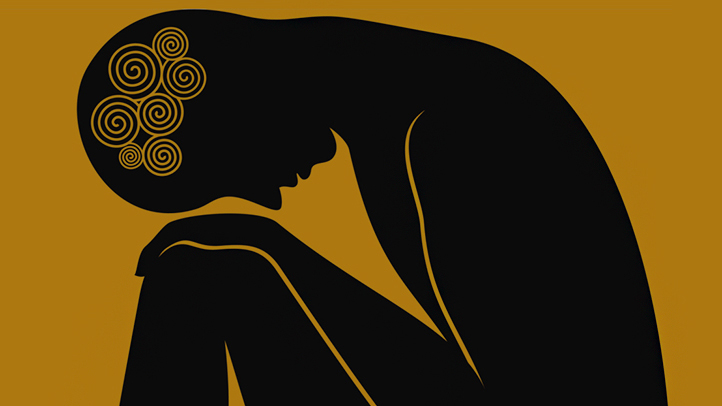A new study published in the Journal of Counseling Psychology investigates the process of change that leads to improvement for people diagnosed with panic symptoms in psychotherapy. The multisite Cornell-Penn trial found that Panic-Focused Psychodynamic Psychotherapy (PFPP) and Cognitive-Behavioral Therapy (CBT) facilitated a process that allowed people to change how they made sense of the bodily sensations associated with panic, which in turn reduced the severity of their symptoms. The researchers, led by Jacques Barber from Adelphi University, explain:
“This is the first demonstration of general processes of change across psychotherapies for panic disorder, suggesting that to the extent patients change their beliefs about the meaning of panic, their panic symptoms improve in time-limited, panic-focused psychotherapies.”
 Previous research has already found psychodynamic therapy and CBT to be effective treatments for a large variety of mental disorders. Combining and integrating elements of both of these therapies improve the results of treatments.
Previous research has already found psychodynamic therapy and CBT to be effective treatments for a large variety of mental disorders. Combining and integrating elements of both of these therapies improve the results of treatments.
CBT has also been found to be more cost-effective in treating Panic Disorder than psychopharmacological treatments, and antidepressants do not appear to provide any additional benefits. Moreover, patients benefit from psychotherapy not just because of the reduction of their symptoms but also because it facilitates empowerment and can improve interpersonal relationships.
Given the additional benefits that arise from the psychotherapeutic experiences in PFPP and CBT, Barber and his colleagues wanted to study the processes that led to reduced panic symptoms in therapy patients. More specifically, they sought to study the re-interpretation of bodily sensations and panic-specific reflective function.
According to cognitive theory, certain interpretations of bodily sensations can increase symptom severity, which reinforces catastrophic thinking and develops into cycles of anxiety and panic. CBT therapists aim to reduce these symptoms by breaking the cycle through re-interpretations of bodily sensations.
Psychodynamic therapy often promotes reflective function, which the authors describe as “the capacity to identify mental states in oneself and others, and to understand behaviors as reflecting underlying mental states and intentions.” Symptom-specific approaches to psychodynamic therapy, like PFPP, often focus on the reflective function regarding a patient’s particular symptoms. For example, PFPP centers around the “necessity of decoding the underlying meanings of panic symptoms.” Although these approaches are somewhat different, both emphasize how patients struggle to make sense of their symptoms and work towards a reinterpretation of their panic experiences.
The sample of this study was composed of 138 participants diagnosed with Panic Disorder with or without Agoraphobia, some exhibiting depressive symptoms. These participants were randomized into CBT, PFPP, and Applied Relaxation Therapy (ART). Participants had 45-50 minutes sessions twice a week for about 12 weeks. To measure symptom severity, they used the Panic Disorder Severity Scale (PDSS). They also measured participant bodily interpretations and reflective capacity using the Brief Bodily Sensation Interpretation Questionnaire (BBSIQ) and a Reflective Function (RF) Interview. The researchers used these tools at baseline, during the 1st, 5th, and 10th week of treatment, and at termination.
They found that early changes in the interpretation of bodily sensations during CBT and PFPP predicted changes in panic disorder severity. This suggests that the process of reinterpreting bodily sensations alleviates panic, regardless of therapeutic orientation.
The researchers also found that psychodynamic therapy significantly improved panic-specific reflective functioning early in treatment, reducing the severity of panic symptoms. Yet, this reflective functioning was more strongly related to people’s outcomes in the CBT treatment group. In other words, the relationship between reflective functioning and the improvement of panic symptoms was substantial in the few cases where CBT did significantly increase reflective functioning.
The authors highlight how CBT’s previous approaches gave importance to unacknowledged emotions and understood them to be stimuli for panic attacks. More recent models exclusively focus on the misinterpretation of bodily sensations. If these results are replicated in future studies, then CBT therapists should take up these concepts left behind.
In conclusion, the researchers found that by reinterpreting the bodily sensations associated with panic and making meaning of these experiences, clients can decrease the severity of panic symptoms. This process of reinterpretation is facilitated through both cognitive-behavioral and psychodynamic psychotherapy. This study also adds to the growing body of research highlight the similarities between different theoretical orientations in psychotherapy and shared change processes.
****
Barber, J. P., Milrod, B., Gallop, R., Solomonov, N., Rudden, M. G., McCarthy, K. S., & Chambless, D. L. (2020). Processes of therapeutic change: Results from the Cornell-Penn Study of Psychotherapies for Panic Disorder. Journal of Counseling Psychology, 67(2), 222–231. https://doi.org/10.1037/cou0000417















Fear.
It sure is not always to be reasoned with. But dangerous to write on people’s med charts.
Report comment
Were I a therapist of some kind, I’d want to know about the nature of the panics, plus the nature of the individual’s experiential world. Although the money might be better in prolonged psychotherapy, I’d be embarrassed beyond comprehension if I found out my client actually suffered from some kind of magnesium deficiency or a mental state responsive to megavitamin and/or mineral supplements.
Report comment
people feel better when sitting talking with a kind compassionate person but once the brief encounter is over we often go back to how we were especially if the causes of our distress remain unchanged – we’re in a sick situation were therapists are attempting to adjust people to cultural disorders and we mistake panic reactions for ‘panic disorders’ square pegs round holes.
Report comment
I think some truths just don’t come to people until much older. I bet therapists, like parents or shrinks become old and realize the useless shit they told to captive audience.
Report comment